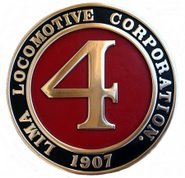 "You gotta remember how it all goes together," said Sam Thompson to Bill Rodgers. Sam and Bill disconnected the bearing at the "big end" of the connecting rod before as they prepared to put the engine no. 1 back together.
"You gotta remember how it all goes together," said Sam Thompson to Bill Rodgers. Sam and Bill disconnected the bearing at the "big end" of the connecting rod before as they prepared to put the engine no. 1 back together."You can't slip it over the end of the crankshaft," explained Sam. To assemble the piston-crosshead-connecting rod group, Sam and Bill had to work one part at a time. First the bearing was attached to the crankshaft. They next lowered the piston into the top of the cylinder and slipped the crosshead just under the piston rod. The last step was to insert the pins and test it.
It took the engine team about three hours to put the no. 1 together. Now that Bill and Sam have re-learned the process, they should be able to put engines no. 2 and 3 together next weekend.


